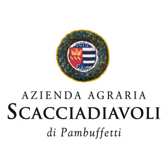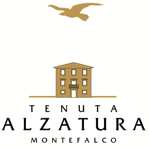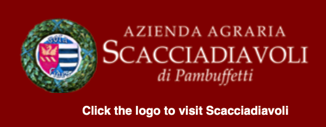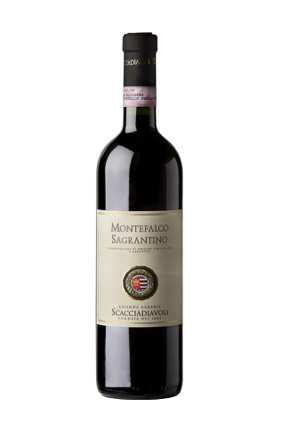
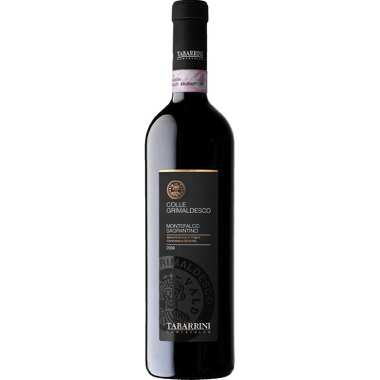
How we discovered Sagrantino in Montefalco, Umbria
It was 2006, what now seems like a lifetime ago, when we first discovered Montefalco, Umbria and Sagrantino. Here is how it happened... as I recall. Go back 15 years...
My wife, Mary, and I have been searching for the ultimate pairing since our arrival in Umbria a few days ago. Have we have found it? Why are we doing this and how did our search begin?
It all started with an email to the Villa Pambuffetti in the Commune of Montefalco, an ancient walled town known as “the balcony of Umbria” for its elevated placement overlooking the verdant valley stretching toward Lake Trasimeno and Tuscany to the west.
The result of that email was a commission to create a portfolio of artwork for the Villa Pambuffetti that would capture the Umbrian experience and illustrate the ambiance of the villa, the town of Montefalco and the surrounding countryside. If I was to be able to create art that would reflect that experience I would need to know more about Umbria and the Commune of Montefalco.
We began by researching the history, the art, the cuisine and regional events. To our delight, we discovered that the annual wine festival, Settimana Enologica - Wine Week, was to be held in Montefalco during our stay. Perfect! We hit pay dirt because art, wine and food are personal passions of ours. Research on the festival, the indigenous grapes and the local wine producers kept yielding the term “Sagrantino.” My wine cellar holds a good number of Italian varietal reds but, I was totally unfamiliar with the Sagrantino grape. And, I discovered, the festival is dedicated to the latest release of Sagrantino based wines. They produce a dense, dark wine of great power and structure called Sangantino di Montefalco. It is revered throughout Umbria yet, little known throughout the wine drinking world. Italian wine professionals consider Sagrantino di Montefalco to be a wine of great stature and potential, equal to the well known wines of neighboring, Tuscany. It has recently been granted the coveted DOCG status - reserved for the best regional Italian wines.
The Sagrantino grape is also blended with Sangiovese and Merlot to make Montefalco Rosso, a more immediately approachable red wine. Also, the grapes can be laid on racks to dry before being pressed. This process, which is similar to the production of Amarone in the Veneto region, produces a sweet dessert wine of high alcohol content named Passito.
Villa Pambuffetti is set in the middle of a lovely park. It features a gourmet restaurant, notable cooking school and a Sommelier on staff. There is a lovely veranda for alfresco dining. The rooms are comfortable. The baths are modern and the water hot. To have found such an oasis of style and hospitality in the midst of the rural setting of Montefalco was much more than we expect.
The cool night air was perfect for alfresco dining. An sparkling aperitif arrived as we sat down. Mario, the Sommelier, suggests, decants and serves us a bottle of Montefalco Rosso from Rocca di Fabbri, a well known local producer. It is our first taste of a Sagrantino based wine from Montefalco. We are impressed. Dinner is a delight.
For our first night at the villa, we have been given the “Tower Room” with panoramic windows. We awake to a view of mist rising from the valley floor. It is breathtaking and I record the event with a series of photographs.
After a breakfast of sweet breads, Umbrian ham, deep yellow yoked eggs, cappuccino and espresso we descend into the basement kitchen of the Villa Pambuffetti and meet another other couple for a cooking class that lasts for 3 hours. It is hard work and very educational. It is also very rewarding as we get to lunch on our efforts with Umbrian wines.
The Villa Pambuffetti commission was now combined with the opportunity to attend a festival devoted to a wine grape that was unknown to us. That started me thinking about the possibility of developing a theme for my artwork revolving around the pairing of wine and art. Naturally, the local cuisine would need to be included.Off we went to Italy and, after a few days in Naples, we drove to Montefalco. It was like going from summer into autumn in a short span of four hours. The salty sea air had been replaced by the clean crisp smell of pine woods. So far, the scenery, food and wine have measured up to our expectations. The afternoon is spent exploring Montefalco with our new found friends from cooking class. Down one of those narrow side streets we find a local restaurant that we will return to for dinner. The first plate - primi piatti - is risotto al Sagrantino. It's a unique local version of Italy's famous rice dish that is infused with Sagrantino wine and takes on a deep reddish purple hue. Delicious. The risotto is followed by veal, pork and lamb and shared desserts of tiramisu and creme of caramel. The evening's wine is a Montefalco Rosso from Ruggeri.
The morning light is perfect so, I grab my cameras and head out to document the villa grounds, surrounding landscape and the tree-lined walk to Montefalco. Inside the walls, Piazza del Comune is quiet. A lone lady and her dog walk slowly by as I take pictures of an umbrella covered vegetable stand next to an Enoteca.
I had the good fortune to be able to set several meetings with Sagrantino wine producers. The first of which is with representatives from Luigi Cecchi & Sons. I hurry back to the villa. I don't want to be late for the meeting. Much to our surprise, the winery representative was Andrea Cecchi himself, along with assistant, Giulia Dirindelli We strike up an immediate, friendly relationship and set off for lunch at one of Andrea's favorite restaurants in the town of Bevagna, a few miles away.
During lunch, Andrea explains “we love Italian grapes and the variations in the lands they come from. Because of that, we purchased land in this area in 1998.” We are tasting 3 of Cecchi's Tuscan wines with the antipasto and pasta courses. All of which are excellent. Andrea continues, “The relationship between grape and land is vital for the production of top wines and Sagrantino has the potential for excellence.” That relationship is a very real pairing, I thought.
We finish lunch and Andrea insists we go back to Montefalco for a vertical tasting of their “Uno” a 100% Sagrantino from their Umbrian estate, Tenuta Alzatura, located in the Sagrantino di Montefalco Docg production zone. Uno is the result of the Cecchi family’s promotional project, put into place several years ago. The wine is dry on the palate, with a strong structural body derived from 14 months of aging in small oak barrels (barriques). Due to its full-bodied structure, Uno, like most other Sagrantinos is ideally served with highly flavored meat dishes and mature cheeses. We taste multiple vintages. The younger wines have a strong tannin load in the mouth. As we progress to older vintages, the tannin takes on a velvety softness and hints of blackberries, plums, vanilla, leather and coffee come to the forefront. At this point, we must take a break because tonight is the opening gourmet dinner for Sagrantino Wine Week. The dinner is to be held, luckily, at Villa Pambuffetti and will feature a menu prepared by guest chef Marco Bistarelli from Ristorante “Il Postale” in Citta di Castello.
The next morning, Settimana Enologica - Wine Week officially opens... Montefalco is abuzz with Sagrantino producers, farmers, Sagrantino aficionados, artists, filmmakers and a mix of curious tourists. The exhibition and tasting hall next to an ancient church on the main street of Montefalco is packed. Over 30 local producers are showing off their just released 2003 vintage of Sagrantino di Montefalco as well as Montefalco Rosso (a blend of Sagrantino and Sangiovese). We walk, we talk, we taste. We are beginning to understand this mysterious wine and the grape from which it is born. In fact, we became hooked on it and remain so today. It remains to be seen whether Sagrantino will be the next big thing to hit the international wine market but, for those who travel La Strada Del Sagrantino and taste the Umbrian experience, it will remain a very special wine.
Wine Week is off to a fast start.
The next days are spent tasting from the plentiful selections until our senses are overloaded and we walk back to the villa for a very light dinner with no wine. Mouro, Allessandra Pambuffetti's husband, comes by and insists that we have to meet his winemaker friend, Giampaolo Tabarrini. Giampaolo drives up a few minutes later and we are introduced. He is young, bright and excited about giving a new life to his grandfather's winery. He will pick us up tomorrow morning for a tour. We arrive at a new modern winery built on the latest technologies. It even has a computerized weather station that can signal critical changes that effect vineyard activity and adjust sensors that keep the aging room at a specific temperature. That may be well and good but, how are his wines?
We taste barrel samples from several vintages... impressive.
Papa Tabarrini joins us. He bears a weathered golden tan from spending most of his time with the grapes and, he speaks no english. We all go upstairs for a vertical tasting of 1998 to 2003 Sagrantino di Montefalco. Again, the older the wine, the softer and more complex it is on the palate. There is a consistency to the vintages yet, each is different... a reflection of Giampaolo's ability to understand the weather and its effect on the annual yield of the vines. Papa really likes the 2000, Mary the 1998. Me, I like them all. Suddenly, Papa bolts from the room and returns with a special Picorino cheese made by a local shepherd and aged in a wrapping of lard and ashes. Giampaolo opens a jar of his mother's apricot jam. We dab it on the cheese and take a bite, followed by a sip of Sagrantino. The magic of the moment is marvelous. This could be the ultimate pairing.
In a world filled with complexity, sometimes, the simple things become the benchmark against which we have the ability to measure life's experiences.
We have been seduced by Umbria's beauty, history, wine, art, food and people. It remains to be seen if I can capture these ingredients in my art and, if wines from the Sagrantino grape will become the next “new wave” on the international wine scene. Forces seem to be in place to make that happen.
We return to Villa Pambuffetti and, with a heavy heart, pack to return home. However, we have been invited back to Settimana Enological and to spend some time with the Cecchi wine family in Tuscany. We can't wait, could you?
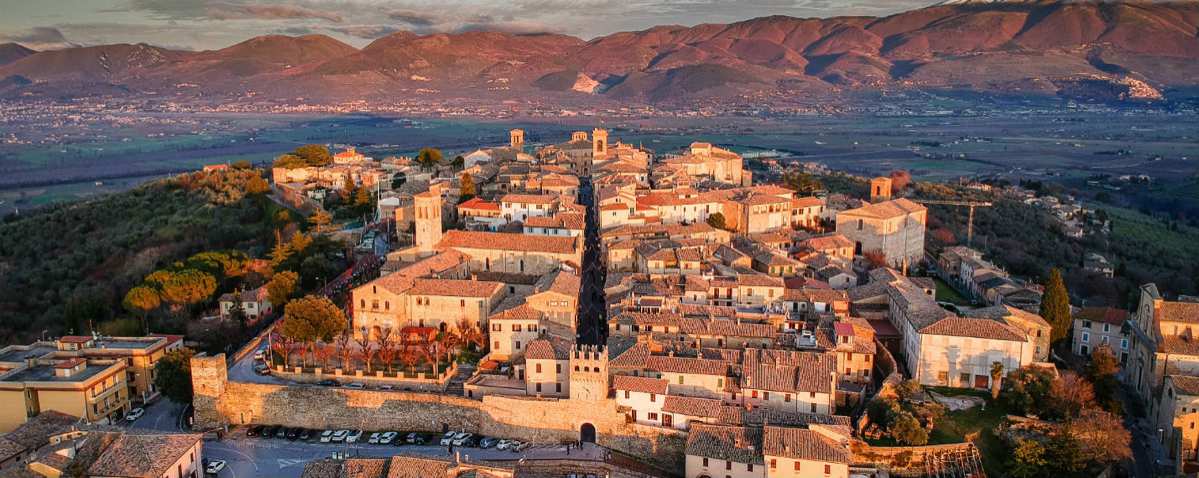
Wineline Magazine
TM
Montefalco, Umbria... The home of Sagrantino Wines
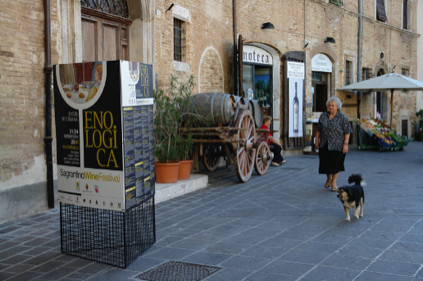
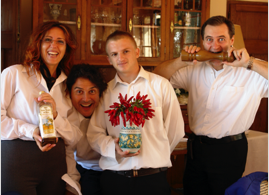
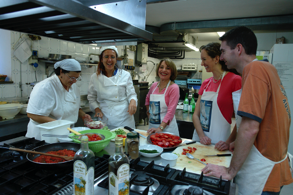
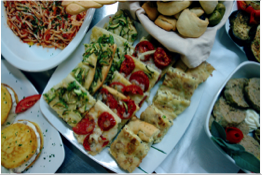
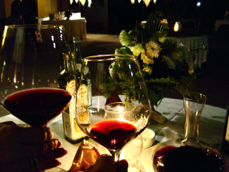
Sagrantino grapes on the vine ready for harvest.
A chard of aged Picorino cheese is dabbed with a dollop of homemade apricot jam. What seems like an odd combination is perfection when tasted with a sip of Sagrantino di Montefalco wine while overlooking pristine vineyards heavy with fruit waiting to be picked for the next vintage.
Here is where it all began, The lovely Villa Pambuffetti in Montefalco.
Allessandra Pambuffetti, husband Mauro and staff. Our Umbrian cooking class at Villa Pambuffetti.
A delicious sample of what we learned to cook.
Our first Villa Pambuffetti dinner under the stars
Giampaolo and Mary discuss the fine points of Sagrantino at Tabarrini Winery in Montefalco.
Giampaolo and Papa Tabarrini taste from a barrel of Sagrantino
Andrea Cecchi and Giulia Dirindelli host us for lunch in Brevanga a short ride away from Montefalco.
The day before the Sagrantino Wine Festival began... a quiet stroll.
The Sagrantino Wine Festival begins... Settimana Enologica.
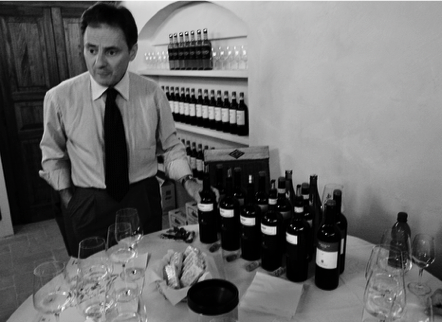

Andrea Cecchi prepares the table with multiple vintages of Tenuta Alzatura's UNO Montefalco Sagrantino for our special tasting.

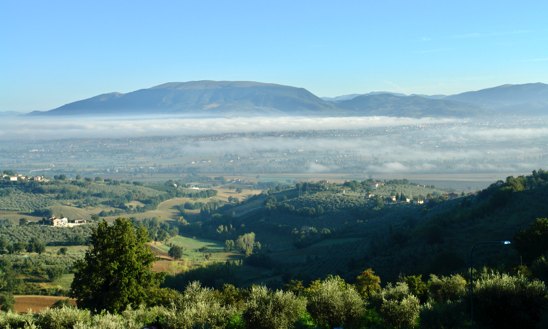
View over the valley (The Balcony of Umbria) from our bedroom at Villa Pambuffetti.
A CONVERSATION WITH LIU PAMBUFFETTI OF SCACCIADIAVOLI WINERY in MONTEFALCO, UMBRIA
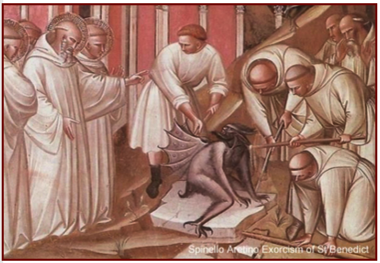
"Scacciadiavoli" means "Chase Away the Devil"
Scacciadiavoli is one of the oldest properties in Montefalco.
The name, Scacciadiavoli (from “scacciare” – to banish, and “diavoli” - devils), refers to an episode of exorcism in the 14th century . The story tells of a young woman possessed by the devil who was made to drink some local red wine by an exorcist, banishing the demon.
"You can banish your demons by drinking wines from the Sagrantino grape by Scacciadiavoli."
Over the last 135 years generations of winemakers have poured energy and passion into this land making a lasting mark on the territory. Montefalco and Sagrantino are now part of the DNA of Scacciadiavoli and the Pambuffetti family. It is a reality that began with Amilcare Pambuffetti and is now being carried on by the family’s fourth generation.
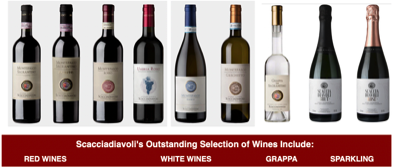
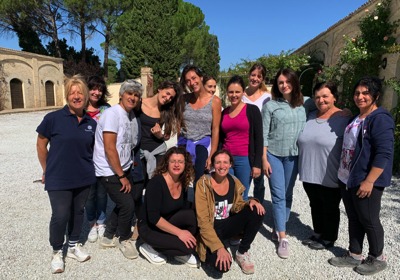
Listen as Liu Pambuffetti talks about the history of Scacciadiavoli and we taste their outstanding wines.
The lovely ladies of Scacciadiavoli pose inthe winery's courtyard.
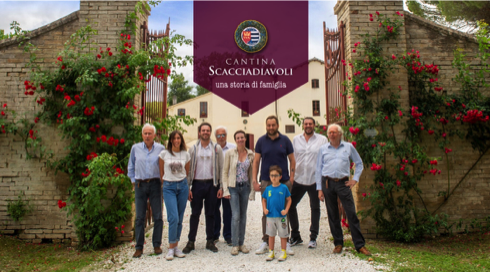
You are certain to get a big welcome at Scacciadiavoli. Tell them Wineline sent you.

Tasting notes: Tenuta Alzatura Sagrantino is the chief result from our venture with Sagrantino di Montefalco that was started a few years ago by the Cecchi family. Viticultural activity in the vineyards is tightly focused on the objective of producing wines of the highest quality. Crop thinning, harvesting by hand, and careful selection before de-stemming allow for the vinification of only the finest grapes. The harvest takes place during the second ten days of October, and after a soft pressing, the grapes undergo fermentation in stainless steel at a temperature of 30 oC. In the course of fermentation, pumpings over (remontage) and some “racking and returning” (delestage) are used to increase the chromatic intensity and phenolic complexity of the Sagrantino. After racking and malolactic fermentation, the wine is aged in small oak casks for approximately 16 months. Uno has an intense ruby-red color with shades of violet and garnet. The bouquet is refined and complex at the core of which are harmonious aromas of blackberry, plum, vanilla, leather and coffee. On the palate, it is complex and intense, a full bodied wine.
Tasting notes: Colle Grimaldesco is the brand that the Tabarrini Family reserve for their highest quality wines, those that are the product of the company’s precise and uncompromising care and attention: Montefalco Sagrantino, dry and sweet, and Montefalco Rosso. The difference is in the detail. Produced in: Montefalco
Grapes: 100% Sagrantino
Vinification: Soaking on the skins for over a month Ageing: 30 months in French oak
Ageing in the bottle: 6 months
Tasting Notes: A sharp and intense ruby red colour manifests itself in the dense complexity of this wine and explodes in a myriad of unique and intense perfumes, ranging from blackberries and fine spices, to elegant hints of minerals. In the mouth, the sensation is monumental and imposing, as it unites warmth and dynamism in an unending finale.
Pairing: Roasts, braised meats, fine game and mature cheeses.
Tasting notes: Scacciadiavoli
Sagrantino di Montefalco DOCG Red, dry
100% Sagrantino
Production Area: Montefalco (Perugia)
Vineyard: Vineyard: 900 feet above sea level with a south, south-western exposure and a density of 2300 plants per acre.
Intense garnet with bricking. Open, racy nose of cocoa, mild spices, a touch of garrigue and subtle exotic wood. Beautiful velvety texture on the palate. A concentrated, nervy, lively wine with aroma still fairly backward and a vegetal finish. Wonderful.
Four hours of decant time and this needed it, the structure in this wine is big. The nose is dark fruit, plum, earth and deep spices. The palate is rigid with both tannins and acid but that does not hold back the enjoyment of the tight fruit and big structure. The finish is very long and very good. Sagrantino is an underappreciated and impressive grape.
TASTING NOTES FOR THREE EXCELLENT MONTEFALCO SAGRANTINOs • Tenuta Alzatura • Tabarrini • Scacciadiavoli

Volume 3 : MONTEFALCO & SAGRANTINO
WINELINE MAGAZINE is a wholly owned subsidary of WinelineMedia, a Juris Corporation company / Winter Park, Florida, USA / +1 407.758.9931
